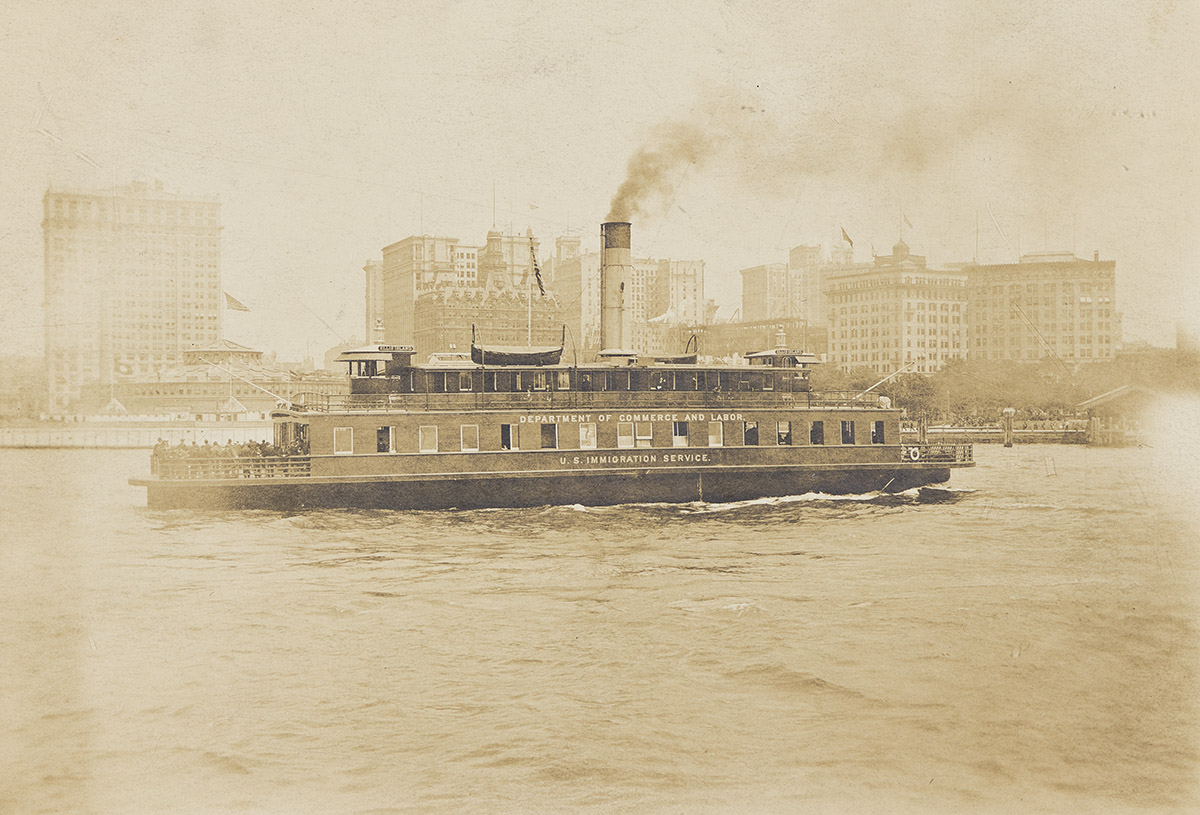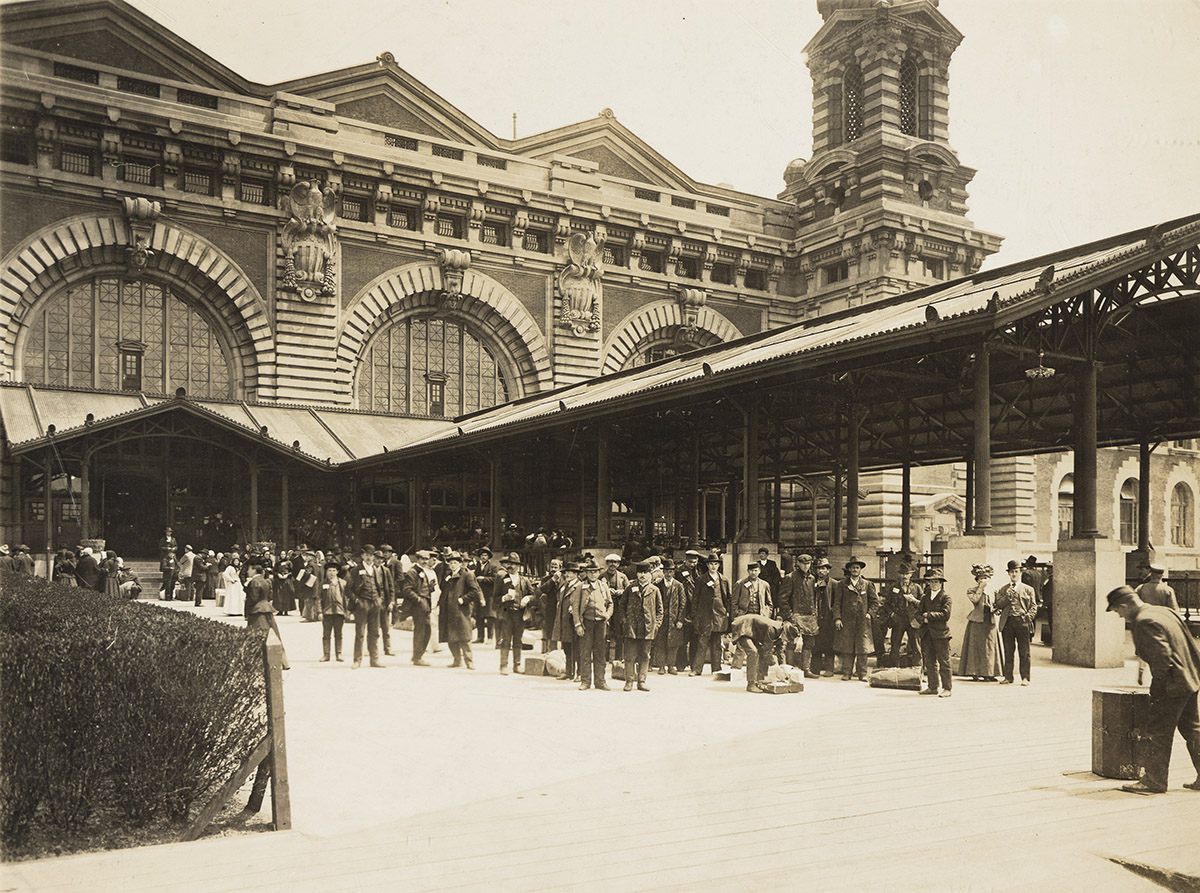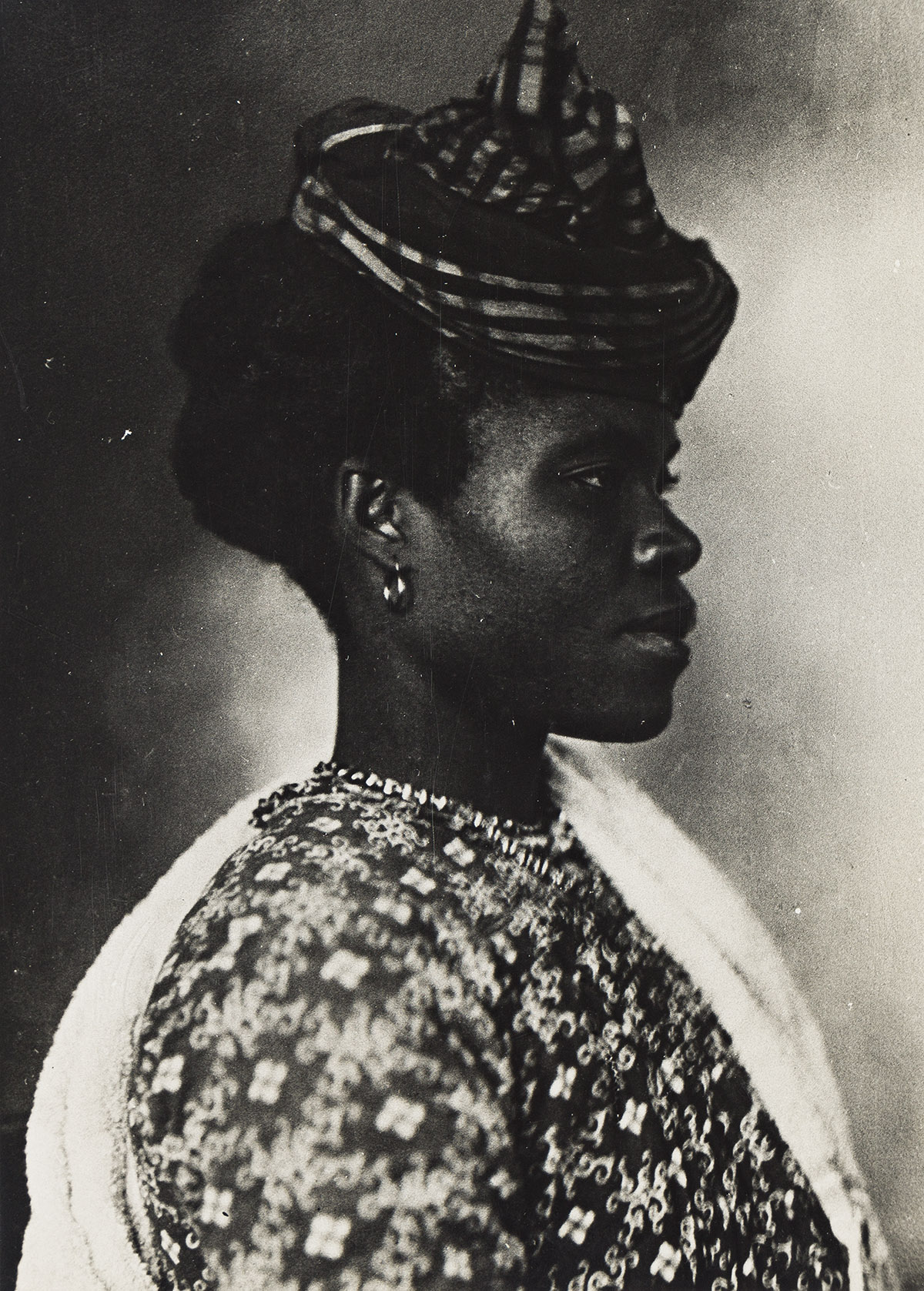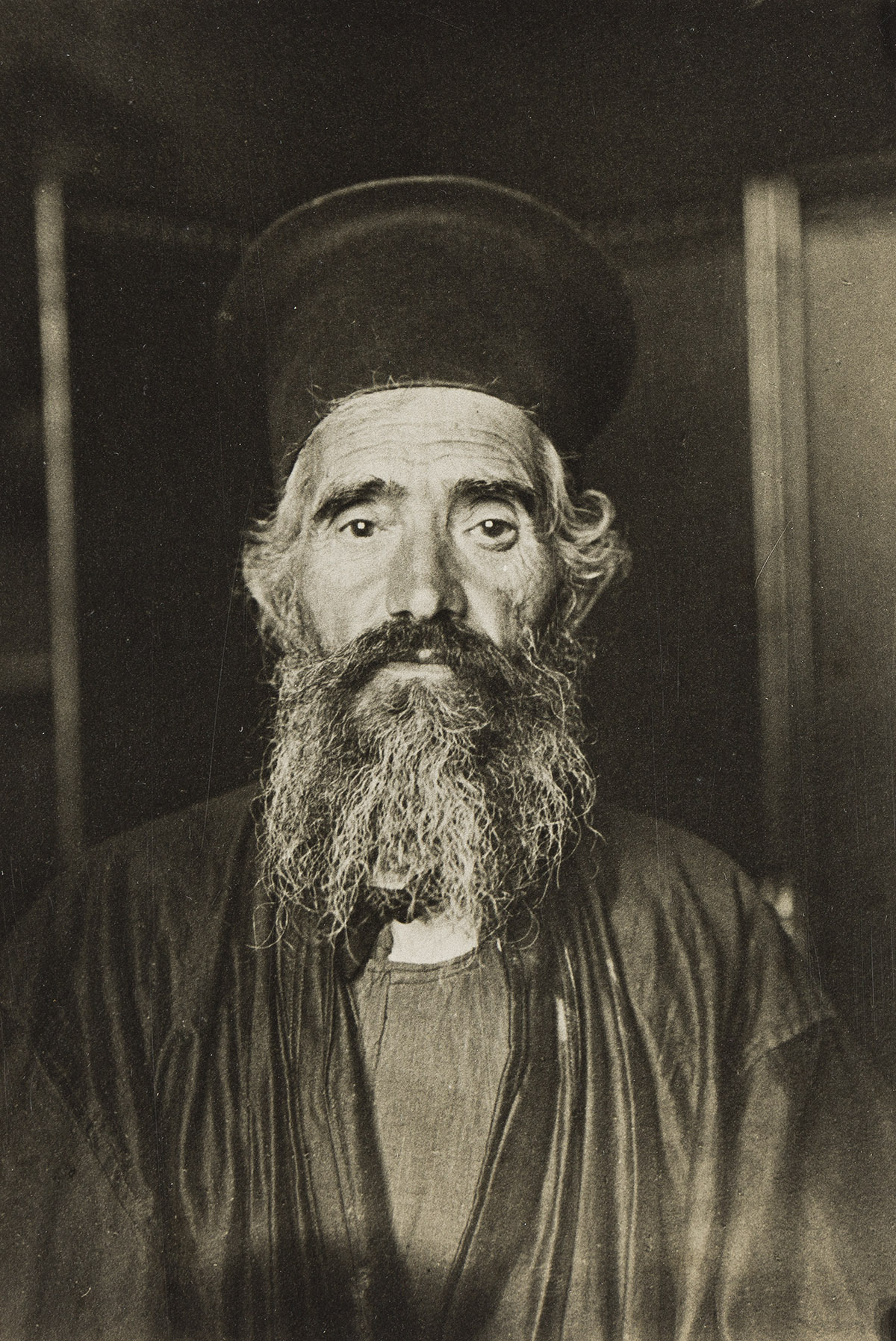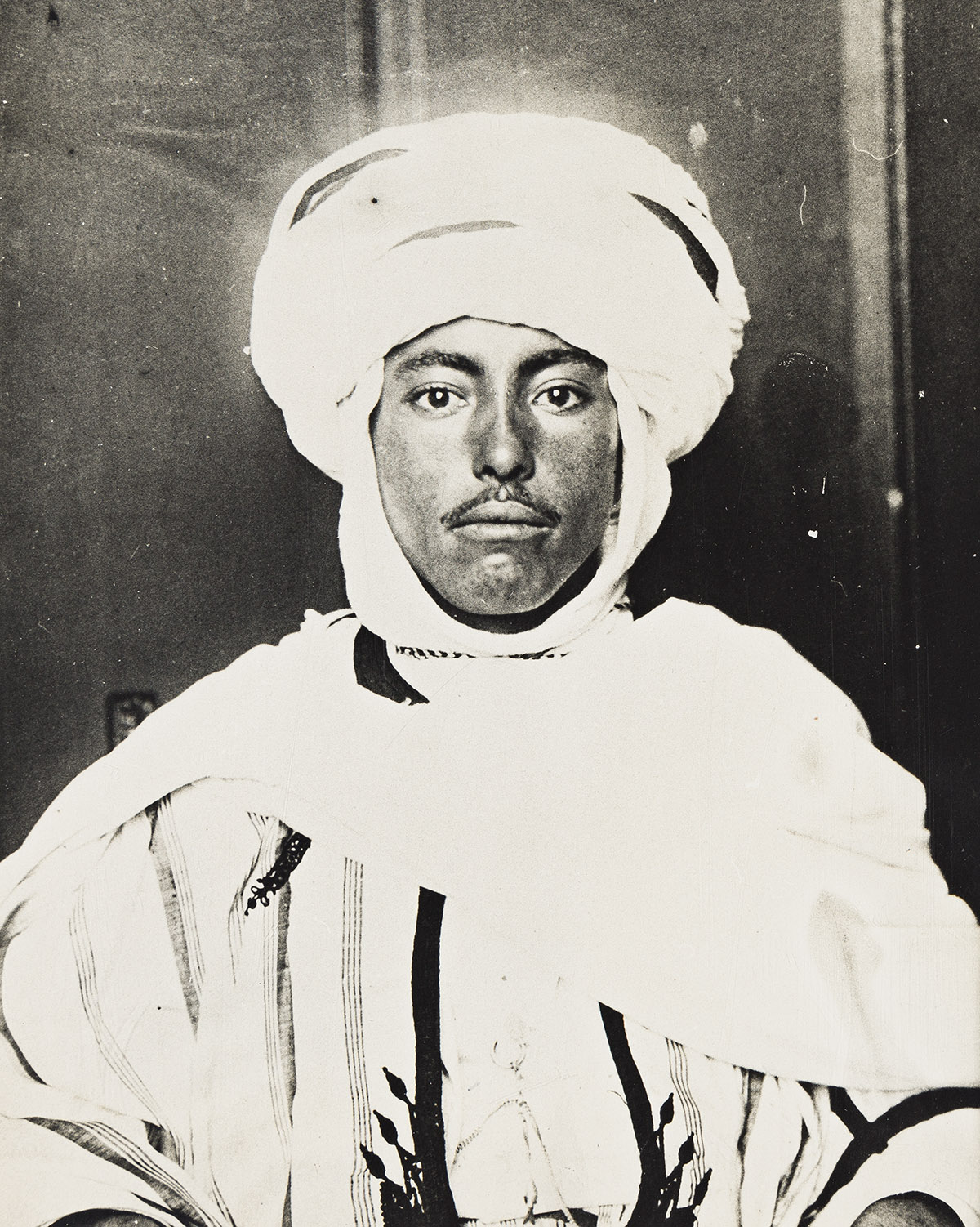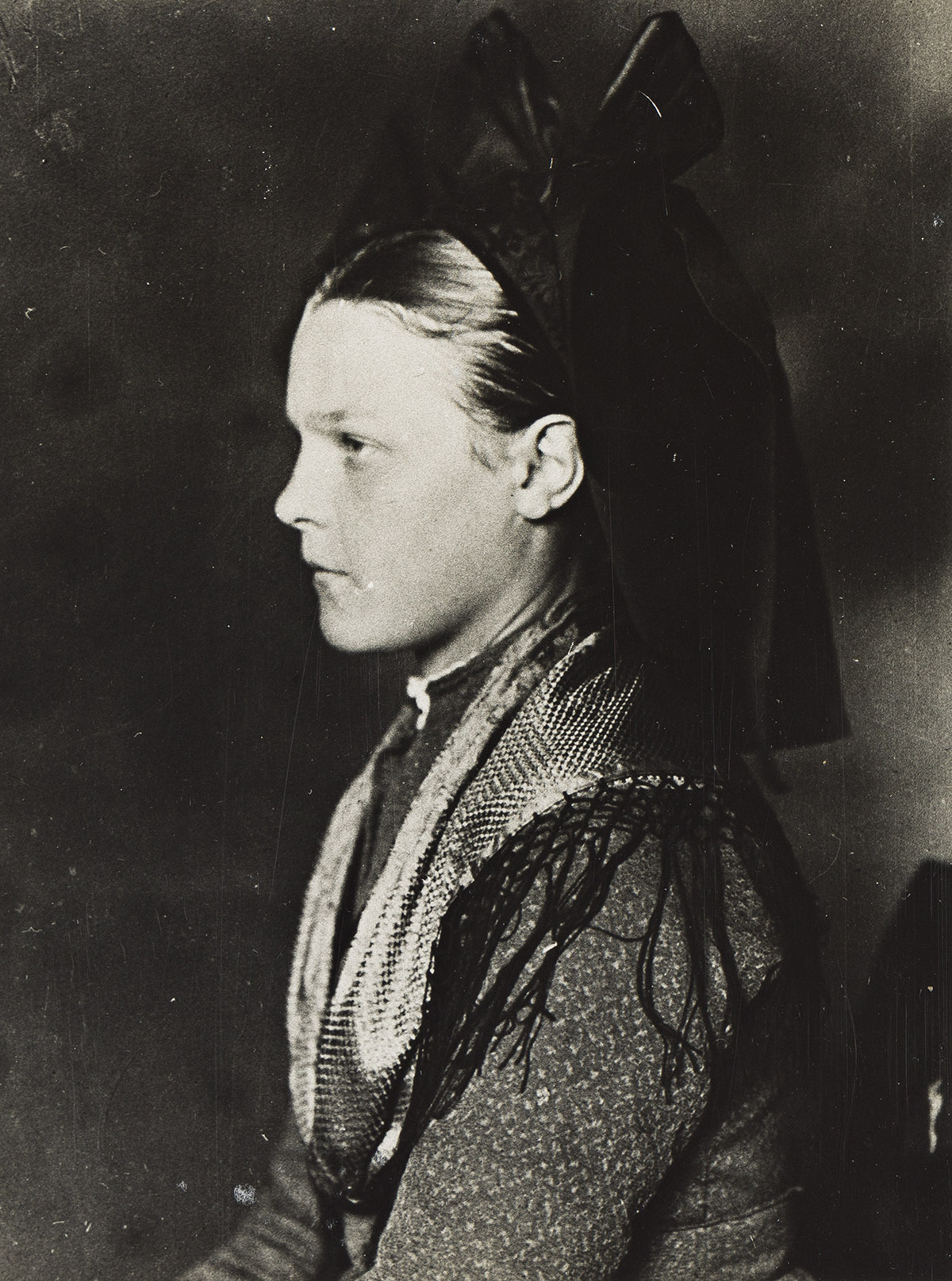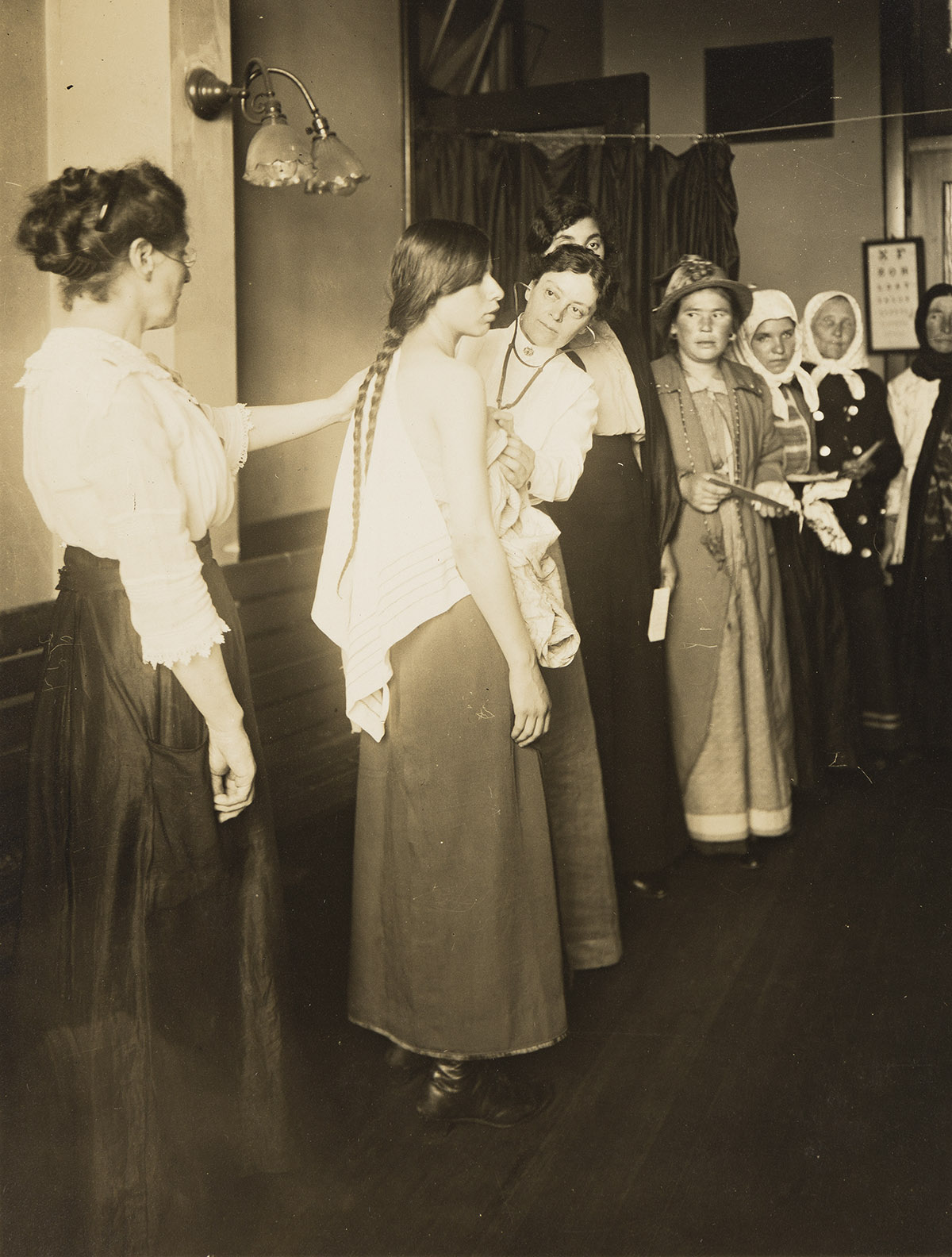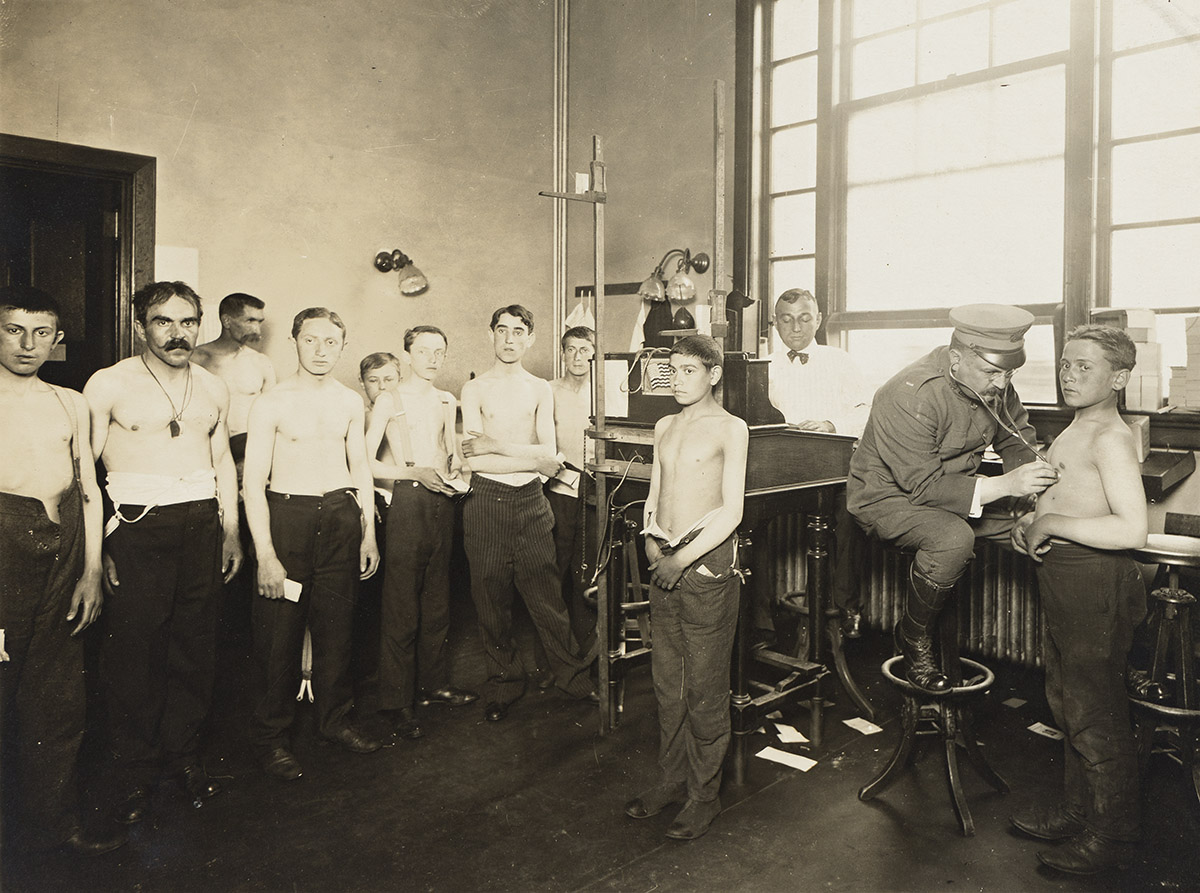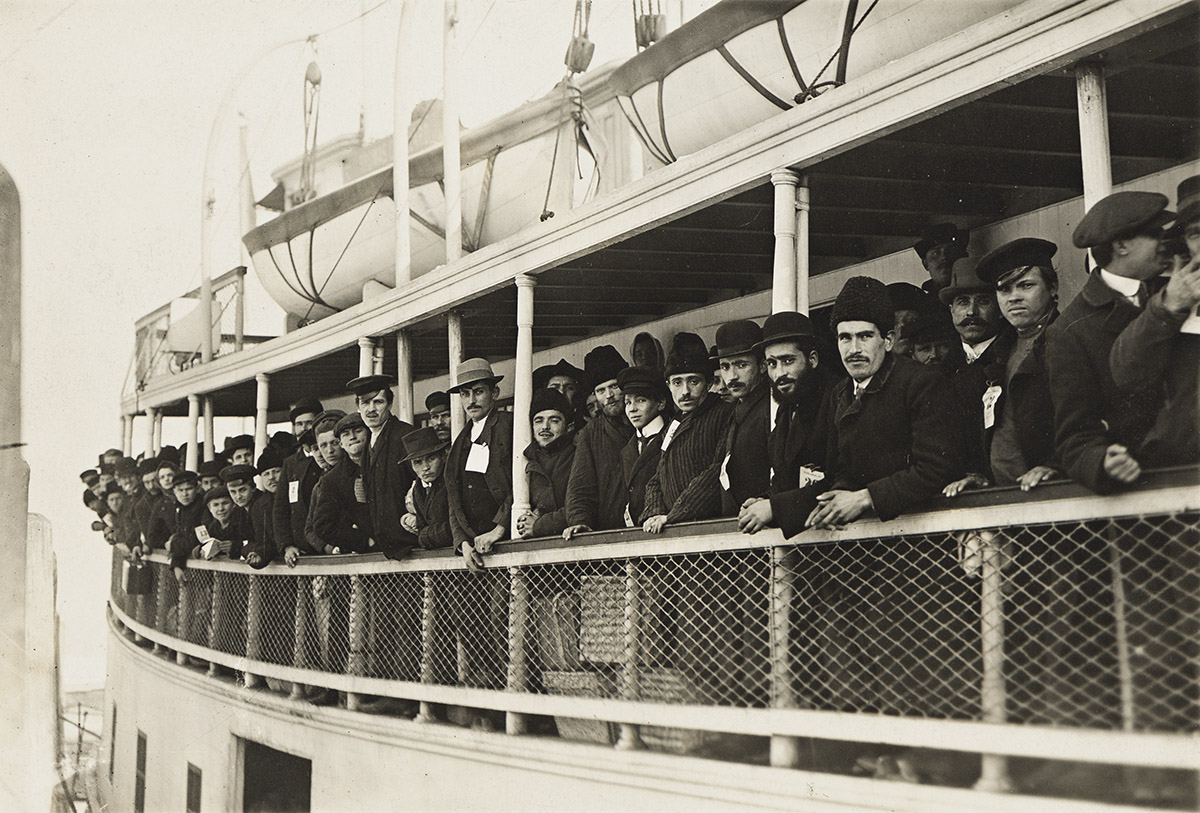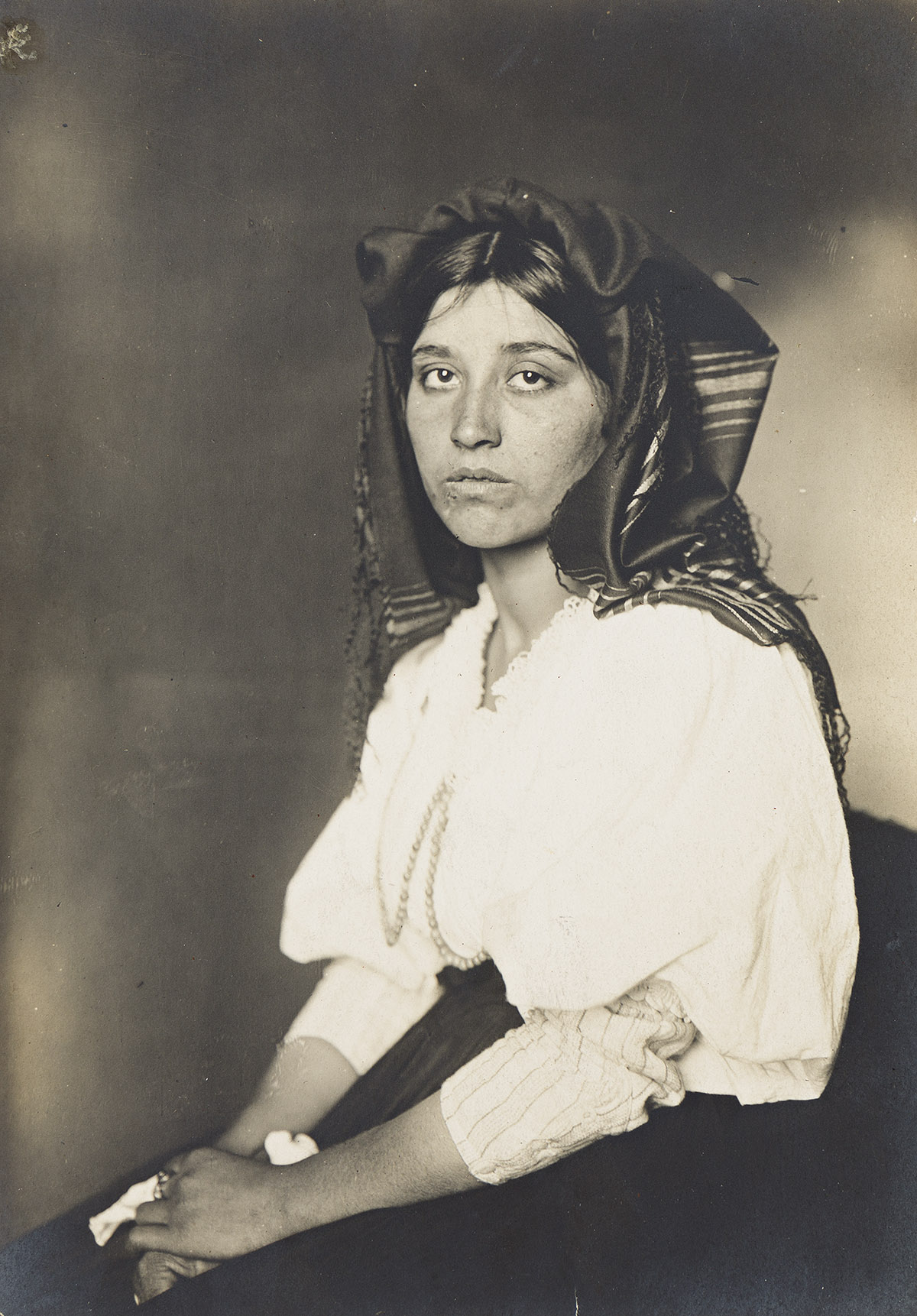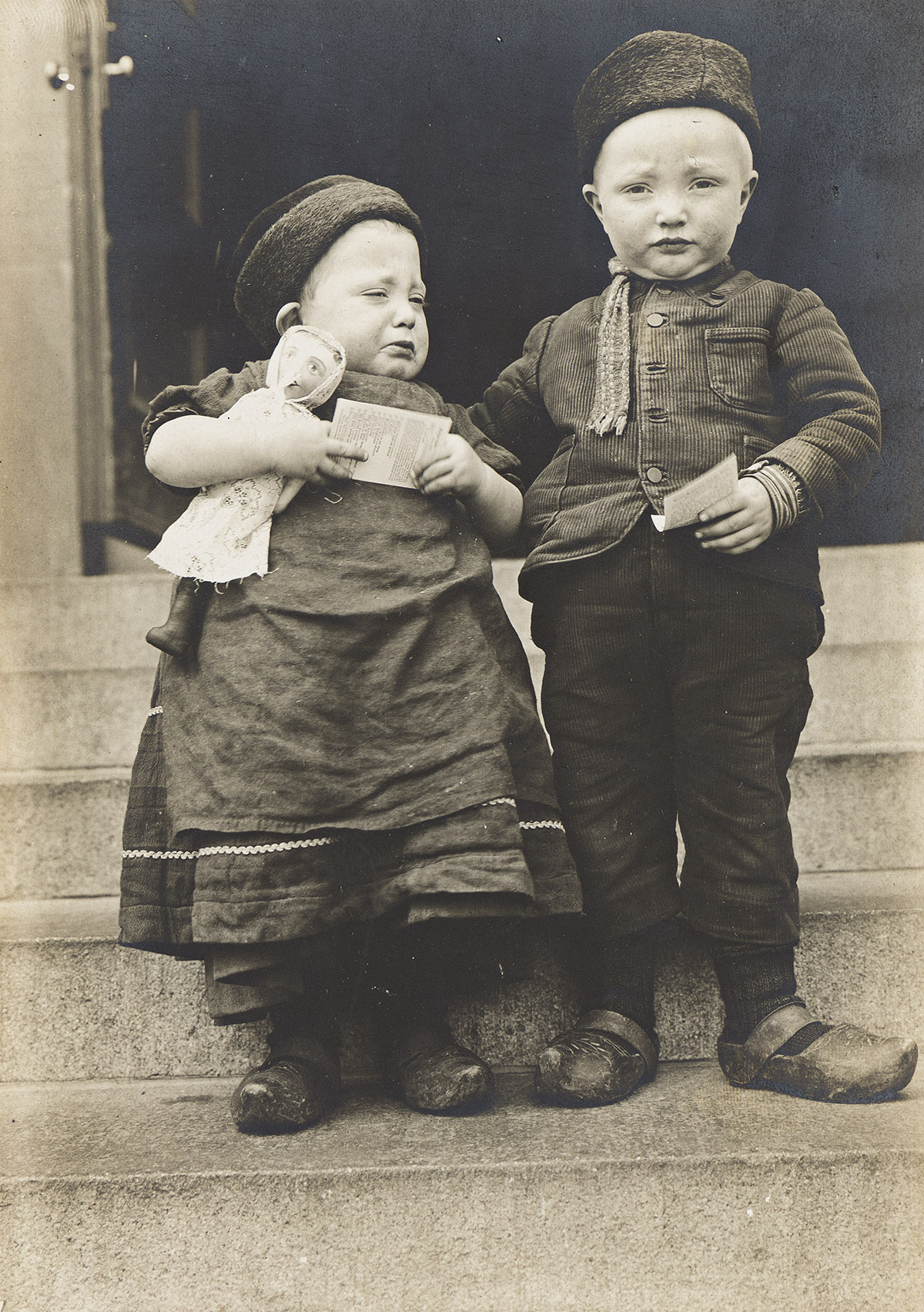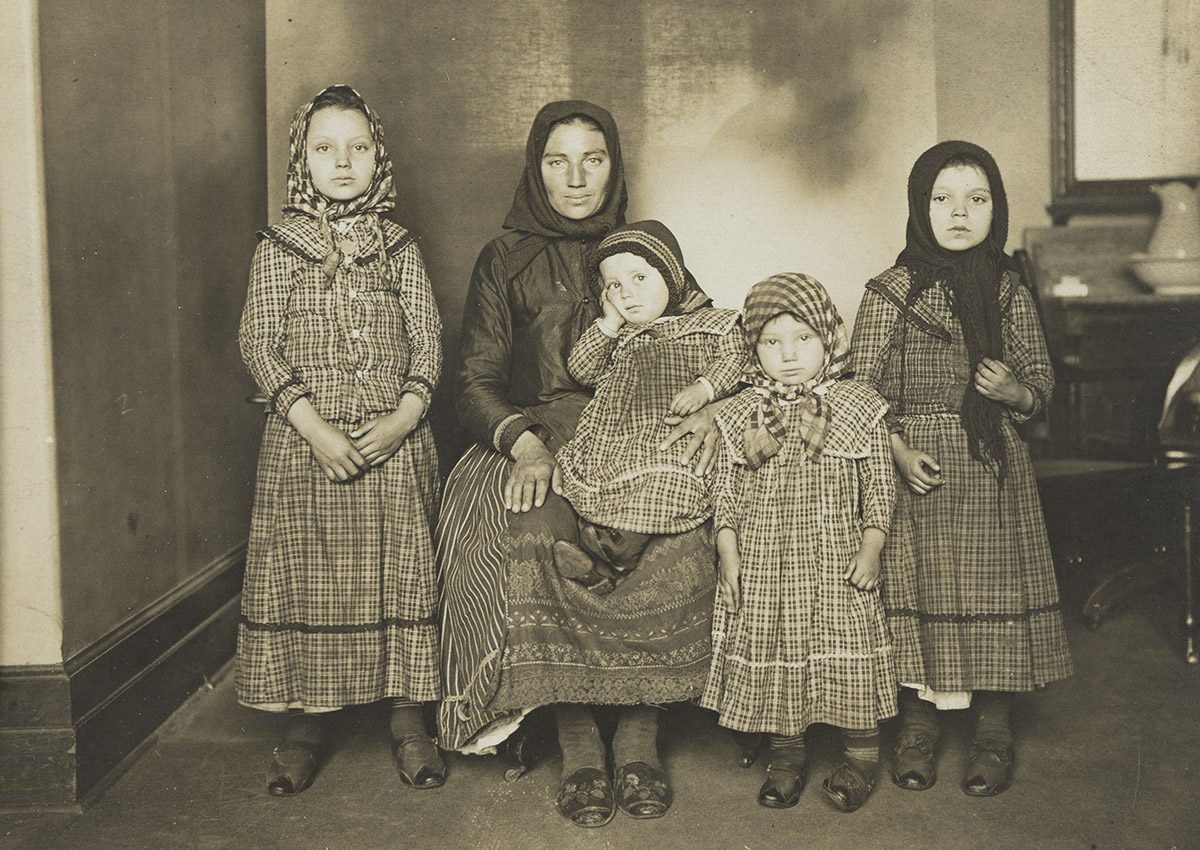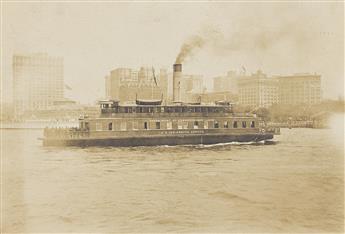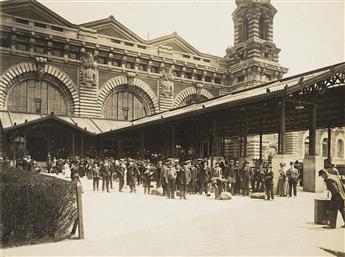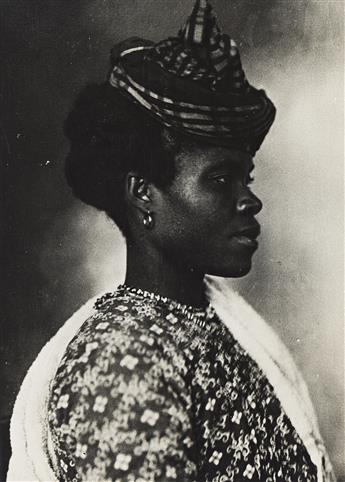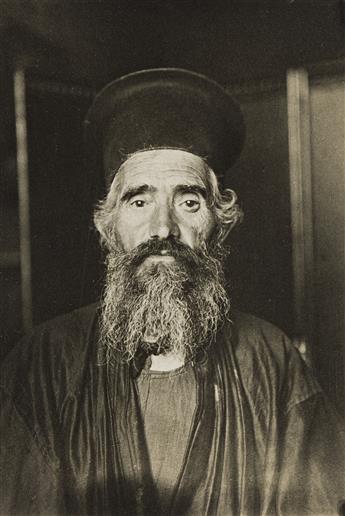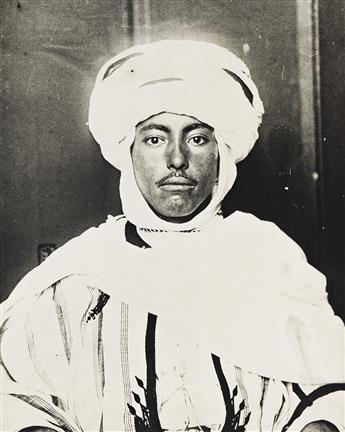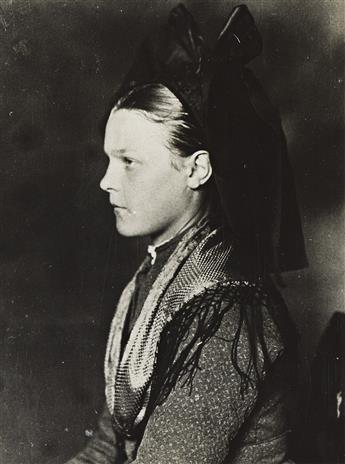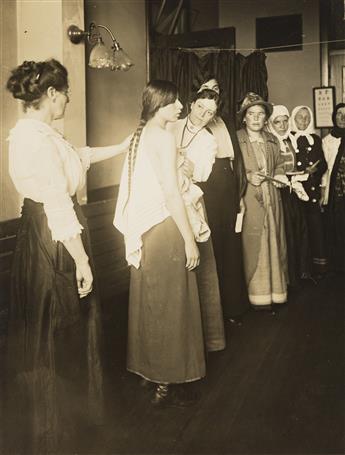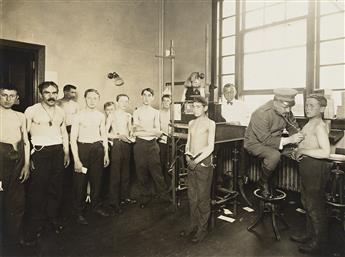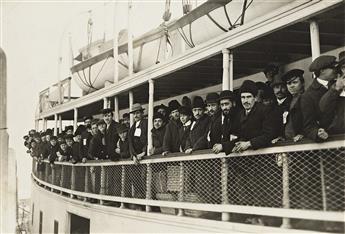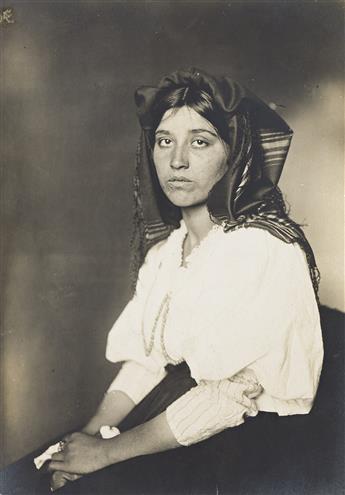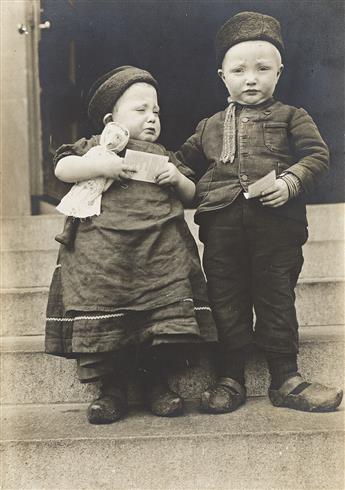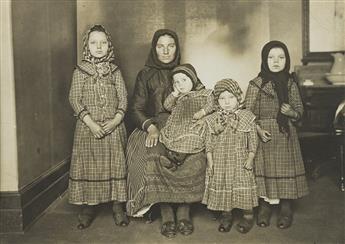Sale 2679 - Lot 14
Price Realized: $ 8,000
Price Realized: $ 10,000
?Final Price Realized includes Buyer’s Premium added to Hammer Price
Estimate: $ 8,000 - $ 12,000
VARIOUS PHOTOGRAPHERS
A vast photographic archive of circa 142 photographs documenting activity at Ellis Island by Augustus F. Sherman (1866-1925), The Brown Bros. (active 1900s-1940s), and others. 1890-1940s.
Other photographers include Perry A. Glick (active 1910s-1920s), Edwin Levick (1868-1929), Underwood & Underwood (active 1880s-1940s), as well unknown photographers.
Albumen (2) and silver prints (140), the images measuring 8¼x6 cm to 27x34½ cm, 3¼x2⅜ inches to 10⅝x13⅝, and the reverse, the sheets slightly larger.
Provenance: The Collection of Edith S. Oshin; by descent to the Present Owners.
From 1855 to 1890 Castle Garden (now Castle Clinton), located in the Battery of Manhattan, served as the New York State immigration station. Around 1890, it became apparent that Castle Garden was ill-equipped to handle the mass influx, so a new immigration station was built on Ellis Island. The new site began receiving arriving immigrants on January 1, 1892. Over the next 62 years, more than 12 million immigrants would arrive in the United States via Ellis Island.
This collection, a portrait of a time and place, offers a rich documentation through photographs taken between 1890s and 1940s depicting daily life at Ellis Island. It combines views of Ellis Island across water and of the building, but also portraits of immigrants, individual and family portraits dressed in their native clothing, as well as sceneries related to the immigration process. The earliest photographs of Ellis Island include a group portrait of the First Federal Commissioners of U.S. Immigration Service in 1890 and a view of the first building on Ellis Island, taken from New York Harbor in 1894.
Although the most widely recognized photographers to work on Ellis Island are Lewis Hine, Jacob Riis, Alfred Eisenstaedt, and Erich Salomon, there are photographers such as Augustus F. Sherman, Perry A. Glick, Edwin Levick, the Brown Bros., Underwood & Underwood and numerous Daily News representatives who captured the experiences of scores of immigrants landing on the island. An important part of the collection consists of over 30 photographs attributed to Augustus F. Sherman, a clerk whose career at Ellis Island spanned from 1892 until 1925. He held various titles during his tenure including clerk for the Registry Division, Chief Clerk and Private Secretary to the Commissioner. From his unique vantage point, Sherman observed millions of anxious individuals waiting in line to be admitted to America. As a registry clerk, it was his responsibility to conclude if the immigrant met the criteria for entry. Creating most of his photographs from 1906 until just before the outbreak of World War I, Sherman photographed men, women and children bearing their intricately embroidered clothes, flowing robes, and unique hairstyles and head pieces. Geographically, his photographs represent Guadeloupe, the Netherlands, Scandinavia, and the Slavic and Eastern European countries, with cultures spanning from Muslim and Jewish to Christian. Included in this collection are photographs of small children and large families as well as intriguing radicals such as the anarchist, Emma Goldman, who was deported from Ellis Island. There are only two others known existent collections of Sherman's photographs. The first is part of the William Williams Collection currently at the New York Public Library. It is likely Sherman worked directly under Mr. Williams who was the commissioner of Ellis Island from 1902 to 1913. The second was given to the Ellis Island Immigration Museum by Sherman's niece (Van Haaften, "Portraits of Entry," American Photographer Magazine, Vol. XVII, July 1986, pp. 74-78).
Unlike Augustus Sherman, the Brown Bros. photographed the inner workings and stations of Ellis Island including the infirmary and the railroad ticket and money exchange windows. They also documented examining patients for the deadly trachoma, competency and mental capacity tests. Later in the 1920s and through the 1940s, the Daily News and Underwood & Underwood documented the various activities on the island and Russian immigrants entering the United States (Aperture, Ellis Island; Hamblin, Ellis Island).
Exhibition Hours
Exhibition Hours
Aliquam vulputate ornare congue. Vestibulum maximus, libero in placerat faucibus, risus nisl molestie massa, ut maximus metus lectus vel lorem.



